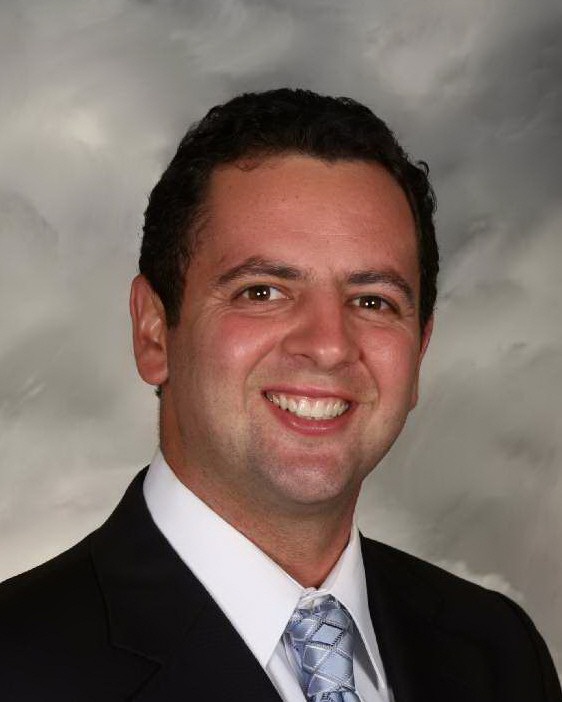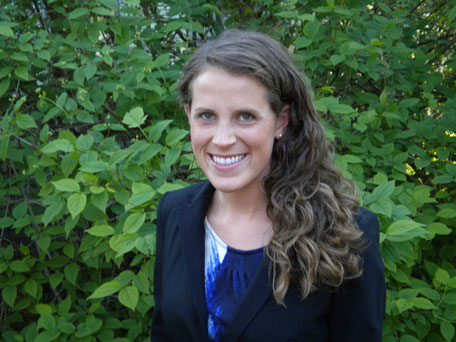EDF Climate Corps fellow | March 21, 2013
“Knocking down a brick wall by yourself with your bare fists is next to impossible. But organize a team equipped with sledgehammers and a plan, and it gets a whole lot easier,” said Gwen Ruta in a Fast Company Op-Ed explaining the concept behind EDF Climate Corps.
This blog post is the fifth in a series, highlighting our team of ‘sledgehammers’ – the 2012 EDF Climate Corps fellows– and their plans for breaking down the barriers to energy efficiency at their host organizations.
Name: Jason Klein
Host Organization: Verizon
School: University of California, Davis, Graduate School of Management
Opportunity: Verizon wanted to pursue energy savings through its Energy Champion program – an employee engagement initiative designed to get employees personally invested in energy efficiency.
Barrier: When Klein arrived, Verizon had already rolled out the Energy Champion program to twenty of its buildings, so its sustainability team wanted to know how effective it had been. Because record-breaking heat increased the buildings' use of air conditioning, it did not look like the sustainability team was going to be able to make the case that the Energy Champion program was effective.
Solutions Identified: Klein designed a model incorporating Cooling Degree Days data and regression analysis – an MBA’s favorite tool – and showed that the twenty participating sites actually reduced their energy consumption by 1.27 percent.
Potential Savings: If Verizon could repeat the results of the first twenty buildings that participated in the Energy Champion program, a one to three percent reduction in energy consumption at the new buildings – which total 5.5 million square feet – would generate hundreds of thousands of dollars of electricity savings every year.
Quote: “Verizon’s Energy Champion program shows that well-marketed employee engagement, when done strategically, can be effective.”
Name: Jeannette Yee
Host Organization: Nixon Peabody
School: Columbia University
Opportunity: Nixon Peabody, a global law firm with 13 American offices, wanted to evaluate its energy use practices.
Barrier: Lease-holding tenants interested in improving energy efficiency face two common challenges. First, tenants often find themselves paying utility bills that are estimated because their space is not directly metered. This leads to a split incentive that means there is a good change that the tenant has no way to effectively manage their energy use or justify energy efficiency investments from a business perspective. Also, for submetered tenants, available rebates for energy efficiency projects can be far less than for directly metered utility customers.
Solutions Identified: To overcome these barriers, Yee found some municipalities, such as New York City, are instituting building codes that require submetering in large commercial spaces. Also, Yee identified that firms can negotiate for an “energy-aligned clause” (EAC) in lease agreements. The EAC model is an agreement between tenants and building owners to share what they predict will be the annual savings and costs of energy efficiency retrofits.
Quote: “Commercial real estate is generally an inhospitable environment for energy efficiency. After all, if you're renting a space, and you don't know how long you'll be staying, why would you make an investment in that might not pay you back before you leave?”
Name: Katharine Grant
Host Organization: Volvo Group Mack Trucks
School: Nicholas School of the Environment, Duke University
Opportunity: Employees are at the heart of improving energy efficiency at the Volvo Group. Because of their granular knowledge of manufacturing facilities and the Volvo Production Systems (VPS), they're uniquely equipped to find efficiency opportunities, and to initiate and implement the projects that will capitalize on them.
Barrier: In many organizations, it is the case that employees have ideas on how to save energy, but do not have a process through which to submit their project idea or its potential savings.
Solutions Identified: At Volvo, employees suggest operational improvements through "kaizens," or projects that aim to reduce production process waste and costs. Kaizens draw on employees at all levels – from assembly workers, maintenance workers and machinists to managers. Each month, Volvo awards the employees who develop the best kaizens at on-site ceremonies. It also shares the best kaizens with other Volvo employees, most notably through its employee-exclusive "intranet" site.
Potential Savings: Grant identified kaizens, such as reducing the idling time of equipment that produces transmissions, as well as installing high bay occupancy sensors to reduce the energy consumed by lighting at the facility, that could save over $100,000 every year.
Quote: “The Hagerstown plant is already pretty efficient –but while walking through the 1.5 million-square-foot facility, I started to understand why American industrial facilities account for 26.2% of total U.S. greenhouse gas emissions. Thousands of light fixtures glow; there are extensive networks of chillers, cooling towers, air handling units, and compressed air equipment; and forklifts, Automated Guided Vehicles (AGVs) and massive motors hum throughout.”
About EDF Climate Corps
EDF Climate Corps (edfclimatecorps.org) taps the talents of tomorrow’s leaders to save energy, money and the environment by placing specially-trained EDF fellows in companies, cities and universities as dedicated energy problem solvers. Working with hundreds of leading organizations, EDF Climate Corps has found an average of $1 million in energy savings for each participant. For more information, visit edfclimatecorps.org. Read our blog at edfclimatecorps.org/blog. Follow us on Twitter at twitter.com/edfbiz and on Facebook at facebook.com/EDFClimateCorps.
About Environmental Defense Fund
Environmental Defense Fund (edf.org), a leading national nonprofit organization, creates transformational solutions to the most serious environmental problems. EDF links science, economics, law and innovative private-sector partnerships. For more information, visit edfbusiness.org. Read our blog at blogs.edf.org/business. Follow us on Twitter at twitter.com/EDFbiz.